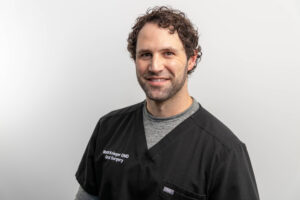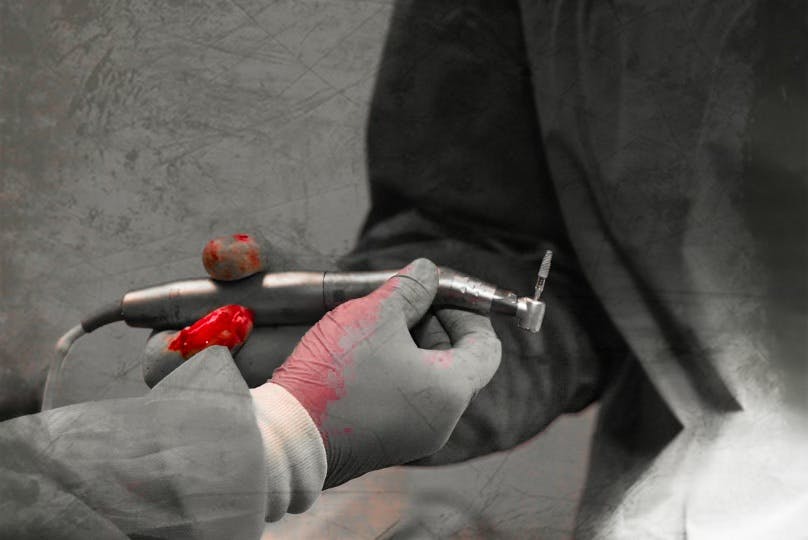Archived Newsletter Re-Post.
The AOX Newsletter • April 2024 #15
A debate as old as time…
Ok, not really.
But it’s a logical question.
Should we start with the maxilla or the mandible first when performing AOX surgery??
Or, should it vary depending on the patient presentation and the case at hand?
I know well trained, very experienced AOX surgeons that fall into both camps. I truly believe there is not a right or wrong order. But as my Chief Resident Dr. Horne engrained in me,
“Always have a reason for doing what YOU do. Never do anything surgically – just because”.
So today, I am going to share with you the 4 reasons why I always cut the maxilla first in AOX surgery.
Why I Cut the Maxilla First
1. I like operating on the maxilla better.
Yep – there’s nothing magical about this rationale. I simply enjoy operating on the maxilla more than the mandible. In large part, because I don’t have to deal with the tongue.
Since I enjoy this arch more, I start with it. This way I hit the ground running with positive vibes. I always attempt to roll into an AOX case with momentum!
2. The maxillary arch is usually more difficult than its counterpart.
I prefer to operate on the often more complex maxilla while I’m fresh and focused.
Keep in mind, that while I always start with the maxillary arch, I will sometimes perform both upper and lower bone reductions prior to moving onto simultaneous implant placement on both jaws.
However, in very difficult cases that require a lot of focus, I will cut the upper arch to completion (all the way down to the last stitch) before moving onto the mandible.
Having the upper arch successfully completed before moving on to the normally more straightforward mandible, helps relieve surgical stress and gives me confidence as I finish the case.
(*An update since the original date of this newsletter publication: I have begun more frequently cutting one arch at a time to completion. I just find it less stressful… But I will still cut both simultaneously in vary straightforward cases and those with little bleeding. I have found myself going back and forth on this technique over the years).
3. I tend to get more “bleeders” and/or small “bone bleeds” in the mandible.
As a result, I like to let my local anesthesia sit longer in this region for the epinephrine to have more time to take effect.
In the maxilla, I typically begin surgery immediately after local anesthesia is administered (please be aware that my patients are in a general anesthetic state).
In the mandible however, I will normally provide local anesthetic ~10 minutes prior to my anticipated mandibular incision. This is normally given after I finish maxillary bone reduction and/or prior to closure of the maxilla. In this way, the local is given more time to sit in the mandibular tissues prior to incision, allowing the epinephrine to exert more profound vasoconstrictive effects.
4. Finally, I usually check the lower abutment position and angulation against the upper prosthetic (Read more about this here).
In addition to using the maxillary prosthetic as stated above (and highlighted in the hyperlinked article), I also additionally confirm mandibular abutment position by ensuring that the lower abutment guide pins are slightly lingual to the upper abutment guide pins when the patient is partially closed.
In order to effectively use either of these techniques, I need to have the upper abutments already in place. Therefore, I need to complete the maxilla first and then move to the mandible.
The upper abutments are always matched to the easily reproducible upper guide. The lower guide, however, is variable and not a good reference. This is why other methods for abutment position verification are used on the mandible.
While I start with the maxilla, the truth is that there are many times where I am working somewhat simultaneously on both jaws.
However, regardless of if one jaw is completed in its entirety before starting the second jaw and/or completed simultaneously – I always start on the maxilla for the reasons listed above.
Let the debate begin…
Matthew Krieger DMD
“Anything I do, I always have a reason for.”
Johnny Unitas
Q & A with Dr. K

“Do you ever do sinus mapping?”
I actually do not perform sinus mapping.
I have tried it a couple of times, but found it cumbersome and time consuming.
Furthermore, I felt that there was no more additional benefit beyond utilizing identification points on the panorex to guide implant placement.
As discussed in previous articles, I simply use reference points on the pano such as a socket or a bone irregularity to guide the implants relative to adjacent anatomy, and I find this technique is much more efficient and just as accurate.
I want to be clear that there is absolutely nothing wrong with doing sinus mapping. And if this is effective for you – then by all means use it. I just don’t find it necessary in my hands to accomplish the same end result.
And since I don’t utilize this technique, I’m probably not the best authority on how to perform it. There may be “easy” or “more efficient” methods that have been perfected by those that use it regularly.
With AOX surgery, there is often more than one way to accomplish the same end goal. Find what works best for you.
Archived newsletters are released on a delayed timeline, a few months after the original publication. If you would like to receive these newsletters in real time please sign up here.

